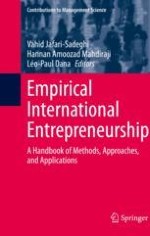This handbook is focused on the analytical dimension in researching international entrepreneurship. It offers a diverse collection of chapters focused on qualitative and quantitative methods that are being practised and can be used by future researchers in the field of international entrepreneurship. The qualitative cluster covers articles, conceptual and empirical chapters as well as literature reviews, whereas the quantitative cluster analyses international entrepreneurship through a broad range of statistical methods such as regressions, panel data, structural equation modelling as well as decision-making and optimisation models in certain and uncertain circumstances. This book is essential reading for researchers, scholars and practitioners who want to learn and implement new methods in analysing entrepreneurial opportunities across national borders.
